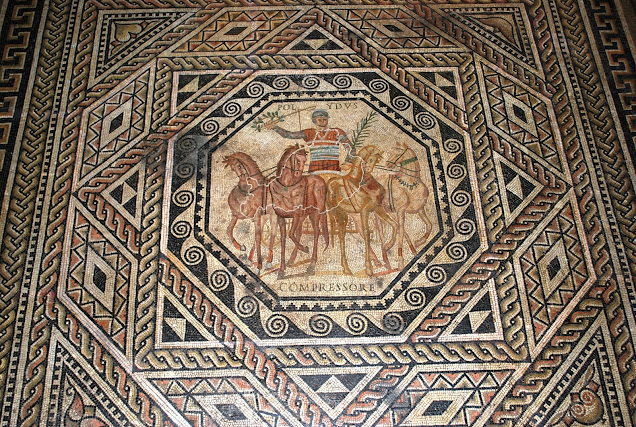Amphitheater of Pompeii
In 2002, 2004 and 2007, I visited Pompeii and its splendid amphitheater. These pictures show the amphitheater after a rainy night in 2004. It is the oldest Roman amphitheater in existence, dating 70 BC. An inscription records that it was erected by the duumvirs Quinctius Valgus and Marcus Porcius, "at their expense". It was built against the southeastern corner of the city walls, which buttressed the shell-like structure of the cavea. These terraces were divided into three sectors: ima cavea (the front row around the arena) for the magistrates and leading citizens, media cavea, further up, and summa cavea, at the top, for the other spectators. The tall parapet surrounding the arena was decorated with paintings of gladiatorial combats, hunting scenes, victory celebrations and so on. It could host approximately 20,000 spectators.
Leaving the ampitheater, you have got a splendid view on Pompei gardens and the Vesuvius.
During one show in 59 AD the supporters of the rival "teams" became involved in a violent brawl causing numerous casualties. The sporting partisanship was in fact only a pretext, for the citizens of Pompeii had a score to settle with the people from nearby Nuceria which, having recently become a colony, had taken over part of the territory of Pompeii. After the disorders Nero "disqualified" the amphitheater for ten years, but the ban was revoked following the earthquake in 62 AD.
Gladiatorial contests, like chariot races, were originally held in large open spaces with temporary seating; there is evidence that some munera were held in the Roman Forum, for example. As the games became more frequent and popular, there was need for a larger and more permanent structure. Although the Circus Maximus was often pressed into service because of its huge seating capacity, the Romans eventually designed a building specifically for this type of spectacle (called an amphitheatrum because the seating extended all the way around the oval or elliptical performance area, which was covered with sand, harena). Early amphitheaters, both in Rome and elsewhere, were built of wood, but stone amphitheaters proved to be much more durable.
A beautiful fresco of the amphitheater of Pompeii, now in the National Archeological Museum at Naples, shows that the amphitheater even had a valum to protect the visitors against the sun. More information about Pompeii in other entries. More of my pictures of Pompeii can be seen here!





Reacties
Een reactie posten